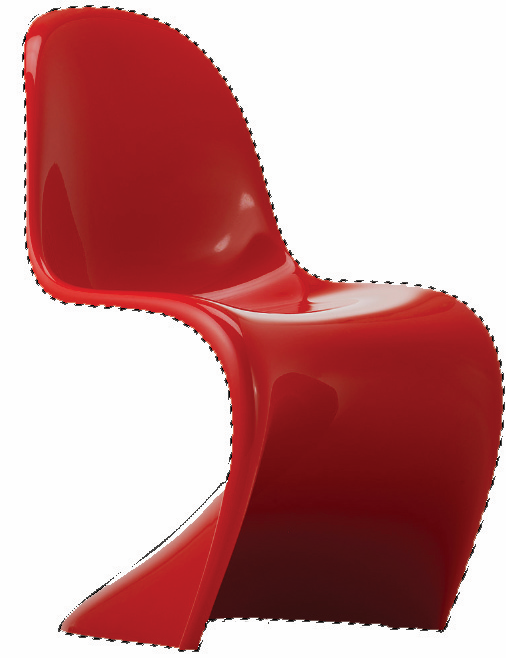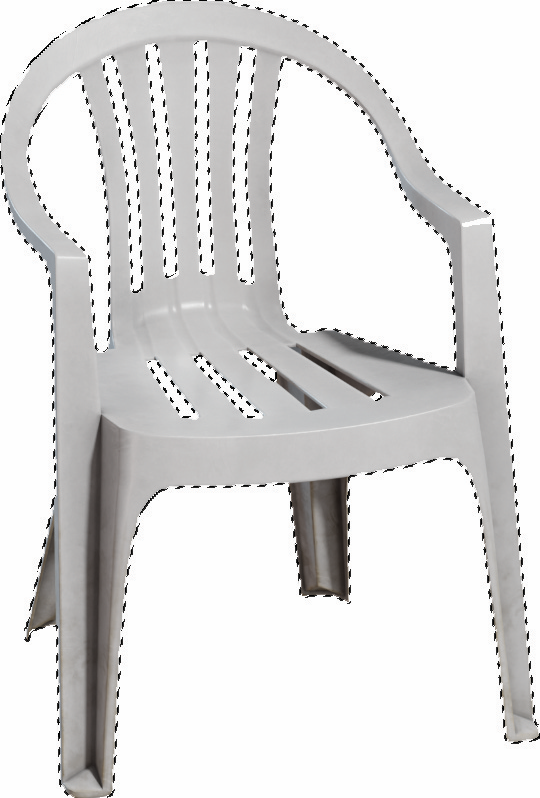On Chairs
I hate chairs without backs. I would rather stand than shift around uncomfortably, trying to compensate for the failure of spinal support. Taking a seat is often synonymous with rest. But what about that awful, lumpy chair? The jabbing, shifting, itchy, comfortless chair? That chair is no longer a passive object we simply place our weight upon. Instead, sitting on such a chair becomes an active interaction between body and object — where the chair’s design shapes our experience of rest and comfort.
Chair design has never been neutral. Instead, it proposes to mediate between our bodies and the social, political, and cultural contexts in which we exist. When we sit, we never really just sit. We encounter a binary, between the active and passive, the context free and context ridden.
Modernism was a movement that redefined furniture as active and functional. From the late 19th century, it grew simpler. The convoluted ornamentation, the gilding, and overstuffing drops away, replaced by a new sensitivity to sleek comfort and practicality. With the advent of modernism, furniture would now consider the body of the user, to correct its posture, to optimise its efficiency, to give shape to a new set of sensibilities and aspirations.
Gerrit Rietveld’s Red and Blue Chair encapsulates modernist simplicity by dramatically stripping the chair to its basic geometry. Designed in 1917, the chair exemplifies De Stijl principles, a Dutch art movement which embraced abstraction, linear forms, and a reduced, but vivid colour palette. Made entirely of wood, I imagine sitting in this chair would be far from comfortable. In lieu of bodily pleasure, the Red and Blue Chair invites its user to engage with the aesthetic experience embedded in its form. Specifically, the chair embodies the ‘machine aesthetic’ of the early 20th century, actively blurring any distinctions made between a structural inside and outside, or between load and support. For the Red and Blue Chair, the red wooden plank acts simultaneously as a load bearing feature for the arm structure, and is supported by the crossbar beneath the seat. Visually, we see an interlocking of geometric shapes, a design choice that actively encourages a more engaged and conscious sitting experience.
Red and Blue Chair (1917), Gerrit Rietveld
The machine aesthetic represented a new approach to design: celebrating industrialisation and functionalism, and reacting negatively to the ornamentation of the past. Clearly, Rietveld saw this chair as more than functional. Included in the instructions for assembling the chair is a verse from German writer and poet, Christian Morgenstern’s ‘Der Aesthet’, to be attached beneath the seat:
“When I sit, I do not want
to sit like my seat-flesh likes
but rather like my seat-mind would,
if he were sitting, weave the chair for himself.”
Rietveld disparages comfort as something only the ‘seat-flesh’ would crave. Here, he’s designing for the transcendent mind. Comfort is vulgar and bourgeois, and so the new furniture, at least for Rietveld, aspires to be something higher and more refined. I wonder how the ‘seat-mind’ would feel about that after a long day at work?
Panton Chair (1959), Verner Panton
In the 1960s, Verner Panton latched onto this concept of playful furniture and ran with it. His Panton Chair further reinforced this idea that chairs can be a site of vibrant expression within the home. The chair, shiny and sleek in its design, strikes me more as a statement piece than a functional seat — something to admire for its boldness rather than to spend long hours sitting in. Though the initial design was created with fibreglass, polypropylene was eventually designated the material of choice, to enable mass production, durability, and affordability. The chair could thus be created out of one piece of plastic and sold for a relatively low price. Panton’s intention, as he himself described, was to “provoke people into using their imagination.” He argues that “most people spend their lives housed in dreary, grey-beige conformity, mortally afraid of using colours.” By reacting to their context, chairs offer a site of meaning-making — vessels for personal expression, cultural significance, and even social commentary.
This playfulness and use of colour was only intensified and emboldened throughout the 20th century, with the rise of postmodernism in the 70s and 80s. The stripped-back purity of earlier modernism was purged from the cultural lexicon, as new chairs were designed in reaction to the rising feminist movement, counterculture and the growing demand for personal expression and individuality. Postmodernism meant expressing more, with bright contrasting colours, intricate patterns, and unexpected materials.
Wiggle Chair (1972), Frank Gehry
I am particularly charmed by Frank Gehry’s Wiggle Chair as an example of postmodernism, with its use of corrugated cardboard. Its base looks like something of a thick ribbon pasta, and its form promises the same level of structural stability. While the Panton Chair exists as a frozen moment of time — an imprint of the body, defined by a single, bold curve, the Wiggle Chair takes a different approach, adding unnecessary and widely expressive bends. This design decision speaks to the new extravagance of the 70s. An era where a sense of playfulness and individuality took precedence over the minimalist, functional aesthetic that came before.
Design history seems to suggest that chairs are inextricably embedded in their moment in time. They have evolved to interact with the user and reflect the differing social dynamics of their context. But what about a chair that seems to transcend this idea? One that is universal and ubiquitous: The Monobloc.
Monobloc (1946) Douglas C. Simpson
I’ve sat in many, and I can confidently assume you have also. Just recently, I found myself sitting in one in the Mauritian Bazaar in Strasbourg-Saint Denis, Paris. The shop, teeming with local products, was transformed into a restaurant only by the addition of these chairs and a small table.
I am certainly not the only person interested in this chair and wouldn’t dream of being the last. In his 2011 essay, Those White Plastic Chairs – The Monobloc and the Context-Free Object, Ethan Zuckerman argues that the Monobloc is powerfully unique in its ability to stand independent of context. In an era of globalisation and homogenisation, most objects remain, at least to some degree, embedded in their locality. The Monobloc, due to its simplicity, ubiquity and affordability, is remarkable in its ability to defy localisation, with its presence as likely in the Global North as it is in the Global South.
But for a chair that is ‘context-free,’ it seemingly bears a lot of social meaning. A compelling example of this is the recent use of the chair on the cover of Bad Bunny's album Debí Tirar Más Fotos. Despite its simple, unassuming form, the inclusion of the Monobloc on the cover resonated deeply with fans, many of whom took to TikTok to comment that "these are more than chairs, these are memories." Specifically, a number of Puerto Rican fans explained that these chairs represented far more than simply functional objects. Rather, they are an active invocation of nostalgia and specific cultural experiences of gatherings with older generations or a pre-gentrified Puerto Rico – experiences and memories that can be brought to the fore by just the image of these chairs. In her book, The Chair: Rethinking Culture, Body, and Design (1998), Galen Cranz encapsulates this connection between chairs and emotions when she explains that: “we design them; but once built, they shape us.”
Perhaps this chair holds such weight because it remains unattached to any specific context, allowing each person to imbue it with their own meaning. By virtue of it being context-free, it becomes, ironically, context-ridden, shaped by the varied personal and cultural interpretations impressed upon it over time. Sadness is sticky on the plastic legs; melancholy asserts itself in the disturbed soil the chair is wedged into.
As we trace the evolution of the Red and Blue Chair to the Panton Chair to the Monobloc chair, it appears that we are back exactly where Panton hoped we wouldn’t be: dreary-beige conformity. Does the Monobloc signal a return to the stripped-down and mundane, rejecting the extravagance of the years past? Or perhaps, it just embodies the culture of standardisation and mass production that dominates our world today. There are, of course, design exceptions to this, with the resurgence of woodworking and a growing interest in manipulating natural materials. However, for the most part, we live in a deeply mass produced environment, and the Monobloc is but a reflection of this reality.
The chair, in all its forms, is entrenched by the context in which it exists. It reacts and adapts itself to the social, political, and cultural forces, as well as to the body that rests upon it. Next time you take a seat — preferably one with a back — consider: are you absorbing the context of the chair, or is the chair absorbing yours?








